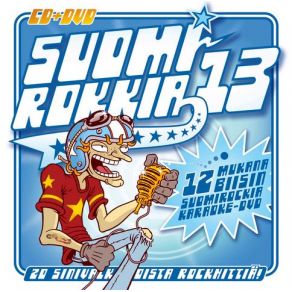Sielun Veljet
Wikimp3 information about the music of Sielun Veljet. On our website we have 2 albums and 2 collections of artist Sielun Veljet. You can find useful information and download songs of this artist. We also know that Sielun Veljet represents Rock genres.
Biography
[Edit]Sielun Veljet ("Brothers of Soul") was a highly influential post-punk band of the 1980s. It was formed in 1983 by singer/guitar player, Ismo Alanko, and lead guitarist, Jukka Orma, from the remains of the successful new wave band, Hassisen Kone ("Hassinen's Machine"). From 1979 to 1983 Hassisen Kone had evolved quickly from melodic three-chord punk to a rock band with more progressive tendencies. After audiences started demanding only the band's early hits at concerts, however, Hassisen Kone decided to call it a day, and Sielun Veljet was born soon thereafter.
Alanko and Orma recruited a rhythm section in order to perform new songs live in concert. Percussionist Alf Forsman had played with many superstars of Finnish music in the '70s, but bassist Jouko Hohko was a newcomer. The band also included lighting technician Hannu Viholainen in its lineup. The sound of the newly formed band was intense, propulsive and funky, and concert performances would become legendary. They had no intention of taping new material in the studio at the time, but that decision would soon be reconsidered.
The fans of Hassisen Kone were shocked and disappointed with SV's more aggressive sound. The old songs had been radio-friendly, despite Alanko's sarcastic and colorful use of language, but the new material resembled war chants and incantations rather than conventional pop songs. One of SV's early releases was the single "Emil Zatopek" (1983). Alanko had stated that a group idol was Czech long-distance runner, Zatopek, and the band's sound was intended as a musical equivalent to his running. Though the band had earned a reputation for pranking its audience, this story has a ring of truth to it. The pace, the intense concentration, and the repetitive structures of the group's songs echo the efforts of athletes competing for first place.
Within the first year, Sielun Veljet released an eponymous, three-sided live album, which also featured Jouni Mömmö (who would later front the cult band Mana Mana) on keyboards. It attracted some critical acclaim but sold poorly. The follow-up EP, Lapset ("Children," 1983), did little to improve sales. Hei Soturit ("Hey Warriors," 1984) was far more approachable and garnered more enthusiastic reviews for the band, but the recording still suffered from middling sales.
The band had a breakthrough with its fourth album, L'Amourha ("L'Amourder," 1985). It retained the stark, aggressive sound of its predecessors, but the constant touring, ensuing media attention and radio play made this album a runaway success and shoved SV into popular consciousness. The follow-up Kuka Teki Huorin ("Who Whored Himself," 1986) was an equally popular and artistic success. The songs were melodic yet muscular, and Alanko's lyrics were both insightful and poetic. The band at this juncture was as tight as the early Red Hot Chili Peppers, and SV's trademark haunting ballads — often acoustic — recall the best of Nick Cave.
Once Finland was conquered, Sielun Veljet turned its eye to the international market. The band changed names to the more export-friendly, L'Amourder, and began recording English-language song versions for the album S**t-Hot (1987) — the only album released using this alias. The album is a strong artistic success, and the band tours Europe supporting it. Russia, at the time struggling out of its cold war mentality, allowed L'Amourder/Sielun Veljet to tour within its borders. These live performances were a huge success, as was their explosive rendition of Bob Dylan's "Blowin' in the Wind."
After the more acoustic, Finnish-language follow-up, Suomi-Finland (1988), SV destroyed its chances of international success by recording the impressive but unexpected Softwood Music Under Slow Pillars (1989) for a German record company. The album was acoustic and humorously mystical — an artistic breakthrough that sold poorly. The band folded soon after, releasing a three-CD set of rarities titled Musta laatikko ("The Black Box") and a documentary film, Veljet, in 1991. The vitality, the lyrical and musical versatility — not to mention the band's dedication to their own ideas despite public indifference — has influenced and inspired innumerable musicians and artists in Finland.
Ismo Alanko began a successful solo career soon after SV's breakup. Jukka Orma has gone on to record with Blues Section and Wigwam founding member, Jim Pembroke, and many other luminaries in the interim and continues working as a producer and session musician.
In 2007 Otteita Tuomari Nurmion Laulukirjasta ("Outtakes from the Song Book of Tuomari Nurmio"), a collection of mostly unreleased cover versions of the songs of Tuomari Nurmio, was discovered and released. Following "Emil Zatopek"'s footsteps, Sielun Veljet finally made it to first place, if only on the album charts 15 years after disbanding.
Collections
Title: Suomirokkia 13
Genre: Rock
Title: Highway Star 2
Genre: Rock




